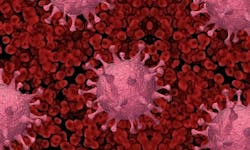The administration’s plans for combating COVID-19
As part of an executive plan to try to pull the country out of the COVID-19 pandemic, President Joe Biden is implementing a strategy to increase vaccinations,1 while trying to prevent lockdowns.
Since the president announced vaccination requirements for the federal government in July, encouraging the private sector to increase vaccinations, many employers, schools, nursing homes, restaurants, and healthcare facilities have announced vaccination requirements. Since May, those 12-years-old and older can get vaccinated at more than 80,000 locations nationwide.
Though more than 175 million Americans are fully vaccinated, nearly 80 million people who are eligible are not vaccinated.
Making COVID-19 testing available for all
To mobilize the industry, President Biden plans to accelerate the production of COVID-19 rapid tests, including at-home tests, to ensure manufacturers prioritize the creation of these products to prevent the spread of COVID-19 and its variants.
Using authorities of the Defense Production Act and through the procurement of nearly $2 billion in rapid point-of-care and over-the-counter at-home COVID-19 tests, approximately 280 million tests, the administration will ensure a broad, sustained industrial capacity for COVID-19 test manufacturing.
Tests are needed to support a variety of places, such as long-term care facilities, community testing sites, homeless shelteres, prisions, jails, and many other settings. Retailers like Walmart, Amazon and Kroger will offer COVID-19 tests at cost for the next three months to make testing more affordable and accessible, a discount of about 35%.
Meanwhile, Medicaid will cover at-home tests for free for beneficiaries, and states need to ensure tools used to manage at-home testing do not establish barriers for people seeking care.
Additionally, 25 million free at-home rapid tests will be sent to 1,400 community health centers and hundreds of food banks to ensure people have access to free tests. The administration is expanding the number of retail pharmacies offering anyone free testing through government’s free testing program.
Mandatory vaccinations for work
The Department of Labor’s Occupational Safety and Health Administration (OSHA) is developing a rule that will require all employers with 100 or more employees to ensure their workforce is fully vaccinated, or require any workers who remain unvaccinated to produce a negative test result on at least a weekly basis before coming to work. OSHA will issue an Emergency Temporary Standard (ETS) to implement this requirement, and this will impact more than 80 million workers.
The Centers for Medicare & Medicaid Services (CMS) is requiring COVID-19 vaccinations for workers in most healthcare settings that receive Medicare or Medicaid reimbursement, from hospitals and dialysis facilities to ambulatory surgical settings, home health agencies, and more. This will apply to nursing home staff, as well as staff in hospitals and other CMS-regulated settings, including clinical staff, individuals providing services under arrangements, volunteers, and staff who are not involved in direct patient, resident, or client care. These requirements will apply to approximately 50,000 providers.
Meanwhile, OSHA is developing a rule to require employers with more than 100 employees to allow paid time off for workers to get vaccinated or to recover from any adverse reactions from receiving the vaccination.
Keeping the public safe
In places of large gatherings, such as entertainment venues, sports arenas, and concert halls, the president is calling for proof of vaccination or a negative test prior to entry. Health officials are also planning the rollout of booster vaccinations starting on September 20, 2021. Information will be available on Vaccines.gov, including what vaccines are available at each site, as well as open appointment times. People can call 1-800-232-0233, utilize WhatsApp, or use the text code 438829 to receive vaccine and booster information.
The president hopes these attempts will help keep schools open, along with universal indoor masking, maintaining physical distance, improving ventilation and screenings. More than half of the nation’s adolescents have been vaccinated. The Centers for Disease Control and Prevention (CDC) found that the rate of hospitalization for children was nearly four times higher in states with the lowest vaccination rates, compared to states with high vaccination rates. The plan calls for governors to require vaccinations for teachers and school staff.
Transportation Security Administration (TSA) expanded its orders for air and ground travel through January 18, 2022, doubling fines for people who are not compliant with wearing masks in airports and while on public transportation. Physical distancing and mask wearing is also required at all federal buildings, federal land, and military bases.
The Department of Defense will double its clinical teams deployed to support hospitals with surges of COVID-19 cases. Free monoclonal antibody treatments are also being shipped to facilities around the country, with about 100,000 doses shipped per week in July and August. The Department of Veterans Affairs opened up more than 150 hospital facility beds in surge states in attempt to lessen the burden on local hospitals.
Supporting economic recovery
The COVID Economic Injury Disaster Loan (EIDL) program provides long-term, low-cost loans to small businesses. The maximum funding has been increased to $2 million, instead of $500,000, and this money can be used to hire and retain employees, purchase inventory and equipment, as well as pay off higher-interest debt. Repayment begins two years after the funding is received.
The Small Business Administration has made more than $11 million in loans that can be forgiven if the money is used to keep employees on payroll, and the loan is $150,000 or less. Borrowers spend an average of six minutes on the application, and 60% of applicants complete the process on their mobile phone.
REFERENCES
President Biden’s covid-19 plan. The White House. https://www.whitehouse.gov/covidplan/. Published September 9, 2021. Accessed September 10, 2021.
About the Author
Marisa L. Williams
Editor
The author of more than 100 independently published books, Marisa L. Williams earned her Master’s at Johns Hopkins University, while interning on Capitol Hill, doing press and communications for the National Association of Community Health Centers. Creating her own Bachelor of Science degree at the University of Toledo, Williams blended pre-medical, pre-law, and laboratory studies, resulting in an interdisciplinary degree emphasizing Forensics. She has worked with Dr. Paulette Moulton (Levy), a dermatologist in Monroe, MI, as well as Dr. Elizabeth Triana, a family medicine practitioner specializing in hormone therapy, based out of Port Charlotte, FL; additionally, she has 20 years of experience as a multimedia journalist, is a third generation Realtor licensed in MI and FL, and has five years of college level teaching experience.

